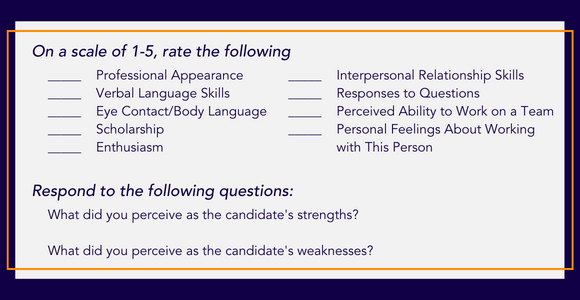Conducting teacher interviews is one of the most important tasks a principal has. The hiring decisions you make impact everyone: the faculty, the students, and their families.
And the need never arises on a schedule. Although spring and summer are the busiest times for interviews, openings occur throughout the school year. School leaders must be prepared to find a great hire whenever an opening occurs.
But with paperwork towering on your desk and a list of phone calls to be made by 2 p.m., it’s an arduous and time-consuming task to engineer a teacher interview strategy that ensures you hire the educator who will serve the kids’ needs best.
Here is a tried-and-true process any principal can use to successfully vet and choose among candidates.
Assemble an Interview Committee
Including other teachers as part of the interview process is a powerful strategy principals can use to keep staff informed, invite input, and create a sense of ownership. When they’re included in the decision-making process, staff members are more likely to feel valued and support administrative decisions more readily.
When assembling your teacher interview committee, consider the open position and ask two or three people who will work with this person. Typically, that means teachers in the same grade level or content area where the opening exists. If it is a position where the staff member will interact with all grade levels or content areas, like media specialists or librarians, seek out representatives from a cross section of the staff.
Try to keep your interview committee under five members. Too many people can be overwhelming during the interview and the post-interview discussion.
Set Expectations
Once you’ve assembled your interview committee, be very clear on how the interview process will proceed, and remind them that, ultimately, you will make the final decision. Some principals allow the interview committee to choose which candidate to hire. They rationalize that “this person will be working on their team, so let them choose.”
I strongly urge you not to do this. As the principal, you are responsible for everyone on your staff, and you will be training, coaching, and evaluating this new hire. You are in the best position to gauge whether the candidate will be able to successfully fulfill the requirements of the role. Too many times, committees will tell me that they liked a certain candidate because “he seemed really nice” or “I liked her personality.” That’s all fine and good, but it doesn’t mean he or she will be a good teacher.
Keep Questions and Performance Consistent
It’s paramount to interview candidates using the same questions and the same interview structure. That way, you can accurately compare the different candidates once the interview process is complete.
To ensure consistency with your interview committee, keep the following principles in mind:
- Develop your own set of questions. Make sure your questions address a variety of areas such as: content knowledge, prior experience, teamwork, interpersonal relationships, leadership experience, instructional practices, classroom management, etc.
- Incorporate criteria and questions from other sources, if needed. In addition to the interview, some schools may require candidates to complete performance tasks (e.g., to assess written communication skills and problem-solving abilities). You can also ask your interview committee to submit questions for consideration. Most of the time, I could work their questions into the list that I already had developed. Make sure to thank them for their questions and show how and where you incorporated them.
- Tell the interview committee you’ll use the same set of questions, in the same order, for every interview. Make sure to explain the “why” behind doing things this way. You want to give each candidate an equal and fair experience during the interview process. This is especially important when a staff member has an existing relationship with a candidate.
- Decide in advance who will ask which questions. Let individuals on the committee choose which questions they would like to ask. Most of the time, you’ll have enough questions for each committee member to ask at least two. As principal, you should always ask the first and last questions of the interview.
- Set up the interview space. Use a large, round table that will fit you, the candidate, and everyone on the committee. This allows the candidate to make eye contact (or not) with all the interviewers. To start the interview, explain to the committee and the candidate that people will take turns asking questions and that the candidate will have an opportunity to ask questions at the end.
Develop an Evaluation Scale
An evaluation or rating scale will help you review candidates in a fair, systematic way. Everyone on the committee should complete the evaluation after each interview. It should include a numerical rating scale as well as a space for written responses. For example:

After the committee members complete the evaluation individually, discuss your responses as a group. You should save your responses for the end so no one feels self-conscious about their answers. If two strong candidates emerge, this discussion will often help you make a final decision.
Wrap Up the Committee
After you’re finished discussing your evaluations, thank the committee members for their participation and input, and ask them to respect candidates by keeping the contents of the interviews confidential. Don’t tell them your decision, because you don’t want staff members discussing who is about to get hired. In addition, sometimes your “first pick” will decline the job offer. Be upfront and transparent by explaining this process to the interview committee.
Choose the Right Candidate
I could usually tell within five minutes of an interview who I was going to hire. Strong candidates have a certain moxie about them. Other times, it took me a while to truly get to know the candidate (as best as one can during a small amount of time).
When it comes down to picking the best candidate, it’s always a gamble. Sometimes, someone appears one way in an interview and then a different person shows up for the job. At the end of the day, remember this advice:
Follow your gut. If you are fortunate enough to have two equally qualified candidates, trust your instincts. And, on the flip side, if you have to rationalize and talk yourself into hiring someone, don’t settle. Keep looking until you find the best candidate. Your students deserve it.







